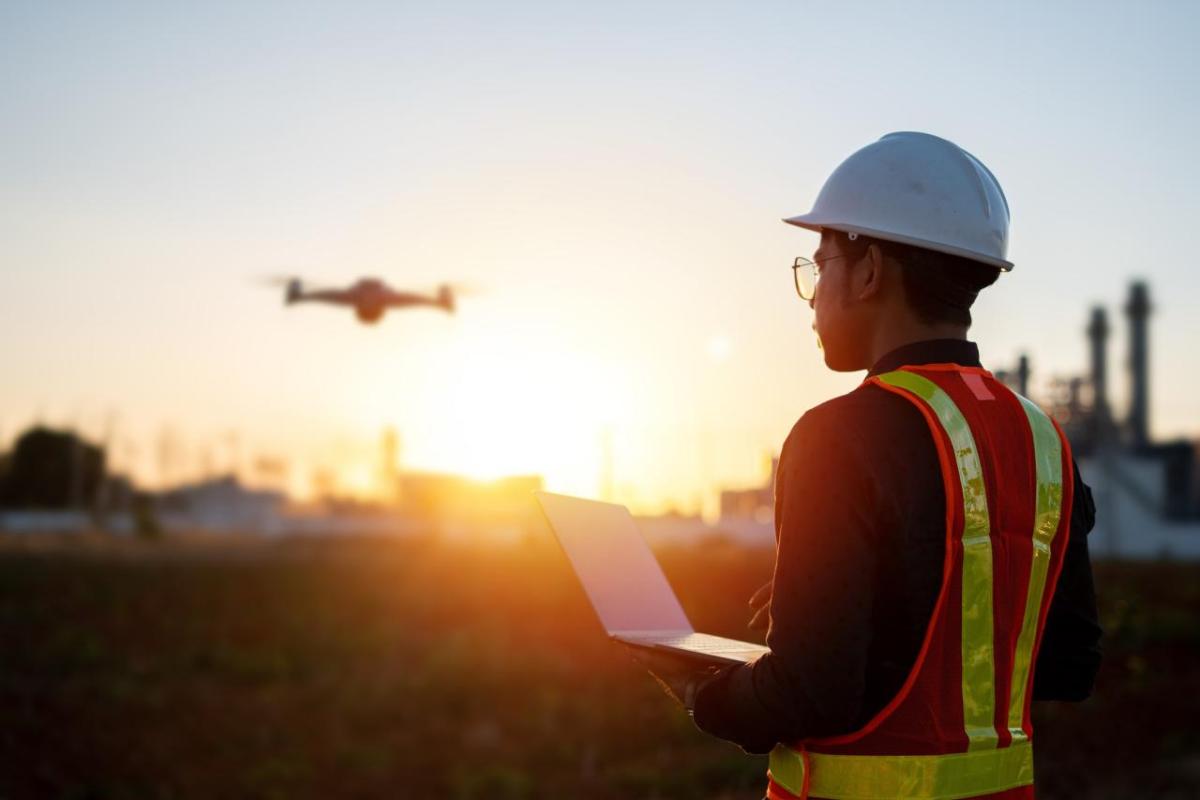EHS Technology: Learn About Key Workplace Safety Innovations

We are living in an extraordinary time for the Environmental Health & Safety (EHS) field. In the wake of what we all hope to be a once-in-a-lifetime global health event, the landscape of work is in some ways unrecognizable. This is due in large part to how the urgency of the pandemic propelled technology forward. Many businesses reimagined when, where, and how work gets done
Hybrid and remote work are a reality for more people than ever before. Advancements in AI and machine learning are improving processes and changing the fundamentals of how many of us do our jobs. Even EHS professionals are adopting new devices, sensors, and software solutions to improve workplace safety and employee health.
Let’s explore some of these incredible new tools that are helping both EHS professionals and the rest of the workforce stay safer and healthier at work.
Technology Benefits for EHS Professionals
One of the most significant changes for EHS professionals is the boom in productivity software solutions. These tools are reshaping work across all industries, and have specific benefits for data-heavy, repetitive tasks common to EHS documentation and reporting.
Streamlined processes
The increased prominence of EHS over the last few years and the role it plays in ensuring organizations seamlessly shift into a new normal has increased the responsibilities of EHS professionals.
Now is the best time for teams to identify tasks that are consuming a significant portion of EHS professionals' time and determine which ones can be automated. By leveraging technology, EHS teams can free up their time for more substantial initiatives, such as addressing the urgent mental health crisis and ensuring their workforce has the tools and technology they need to remain safe on the job.
Tier II reporting
Tier II reporting is a regulatory requirement under the Emergency Planning and Community Right-to-Know Act (EPCRA) in the United States. The purpose of Tier II reporting is to provide information about the types, quantities, and locations of hazardous materials in a community, enabling emergency responders to prepare for and respond to potential chemical accidents or incidents.
Due to the vital nature of this information, Tier II reporting is a tightly regulated process that historically involves a great deal of manual reporting.
In the upcoming year, the EHS industry is set to make significant strides in automating manual reporting tasks, including Tier II reporting. This automation should be game-changing for organizations that manage large quantities of hazardous materials.
Top 5 EHS Technologies to Watch
1. IoT (Internet of Things) and sensors
The Internet of Things (IoT) and sensor technologies have revolutionized the way we monitor and manage environmental conditions. IoT devices and sensors can be used to collect real-time data on various environmental factors such as air quality, water quality, and noise levels. This information can then be used by EHS professionals to identify potential hazards and take appropriate measures to mitigate them.
2. Augmented reality (AR) and virtual reality (VR)
Augmented reality (AR) and virtual reality (VR) technologies enable users to create simulated environments that replicate real-life scenarios, allowing them to experience and respond to different situations in a safe and controlled manner.
EHS professionals can create virtual scenarios that replicate a hazardous environment, allowing them to train employees on the appropriate safety protocols and emergency response procedures. This type of training can help employees to better understand the hazards they may face and how to respond appropriately, without risking injury or harm to themselves or others.
3. Artificial Intelligence (AI)
With AI, EHS professionals can analyze vast amounts of data to identify patterns and trends related to workplace safety, enabling them to make data-driven decisions to improve safety outcomes.
AI algorithms can be used to analyze injury data and identify patterns that may indicate systemic safety issues. By identifying these patterns, EHS professionals can take corrective actions to address the root causes of the safety issues and prevent future injuries.
4. Wearable technology
Wearable technology has emerged as a powerful tool for EHS professionals to monitor workers' vital signs and improve workplace safety. Wearables such as smart helmets, safety vests, and smartwatches can collect real-time data on a worker's vital signs, such as heart rate, body temperature, and breathing rate, and transmit this information to EHS professionals.
In addition to monitoring vital signs, wearable technology can also be used to track a worker's location and movements, helping EHS professionals to identify potential safety hazards and prevent accidents from occurring.
5. Drones
Drone technology has become an essential tool for EHS professionals to monitor and manage workplace safety and environmental compliance.
Drones equipped with cameras and sensors can be used to conduct site inspections and identify potential safety hazards, such as leaks, spills, or damage to infrastructure. Drones can reach areas that are difficult or dangerous for humans to access, such as rooftops, or severe terrain. Additionally, superior-quality aerial images can be obtained via drones for any type of construction, remediation, or demolition project.
EHS professionals can also use drones to monitor environmental conditions, such as air quality, and noise levels.
Learn more about how our EHS professionals are using technology to improve outcomes for organizations like yours.
About Antea Group
Antea®Group is an environment, health, safety, and sustainability consulting firm. By combining strategic thinking with technical expertise, we do more than effectively solve client challenges; we deliver sustainable results for a better future. We work in partnership with and advise many of the world’s most sustainable companies to address ESG-business challenges in a way that fits their pace and unique objectives. Our consultants equip organizations to better understand threats, capture opportunities and find their position of strength. Lastly, we maintain a global perspective on ESG issues through not only our work with multinational clients, but also through our sister organizations in Europe, Asia, and Latin America and as a founding member of the Inogen Alliance. Learn more at us.anteagroup.com.

